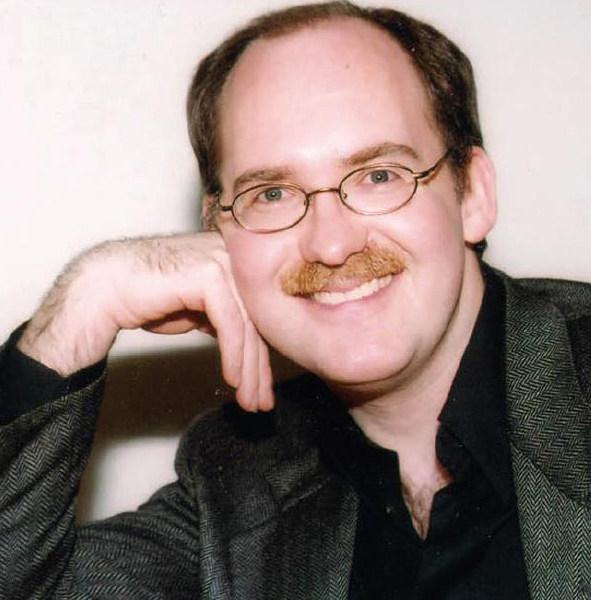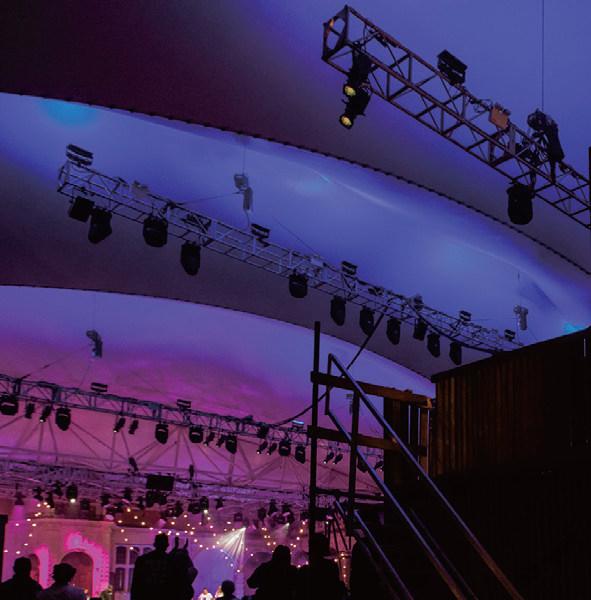歌剧重返大自然
2022-09-05司马勤
司马勤



好朋友黄哲莲的哥哥是一位著名编剧。可想而知,她也精通戏剧。而且因为她常住洛杉矶,对电影的洞察力也是无可非议的。但是,她极少看歌剧,所以当我们一起看罢《塞维利亚理发师》后,她发了两则令我欣喜的短信——“我想再去看一次歌剧!!”几秒钟后,“但只可以在户外!”
我还没有告诉你,她有“新冠恐惧症”吧。我不确定今天的她愿不愿意周游列国,但我怂恿她赶紧去订一趟飞往伦敦的航班,然后直奔荷兰公园。
我知道很多人都不愿意在新冠疫情大流行期间跟其他人一起困在室内场所——或许他们只是特别喜爱露天歌剧演出那种悠游野餐的氛围——去年夏季,这类歌剧演出的频次屡创新高。甚至是通常在室内剧院举办的夏季歌剧节(比如说辛辛那提歌剧院、圣路易斯歌剧院),都将演出移师至空旷的、更容易符合防疫措施标准的地方。而目前,大部分歌剧院都已照常营业——这也正是荷兰公园歌剧院(Opera Holland Park,简称OHP)吸引人的原因。他们的“照常营业”就是户外演出。
要是你觉得我像个新晋的皈依者般狂热布道,那也情有可原。我首次踏进荷兰公园只不过是数周前,尽管我多年前已经听说过这家歌剧院。2010 年,这个每年历时3 个月的夏季歌剧节获得伦敦《泰晤士报》赋予的“最佳歌剧院”的荣誉,从而引起我的关注。2018 年,当荷兰公园歌剧院赢得国际歌剧大奖年度“教育与拓展”奖项后,我决定必须亲自探访,去看个究竟。可惜,全球性公共卫生危机延误了我的这一计划日程。
终于,我带着一肚子疑问,来到了荷兰公园歌剧院——最佳歌剧院?当真?在体育竞赛里,轻量级与重量级选手从不会同台比试。我也不需去比较荷兰公园歌剧院与伦敦皇家歌剧院或英国国家歌剧院每年度的营运财政预算。当然,它们属于不同量级。尽管如此,荷兰公园歌剧院具备的某些魅力,让广大的歌剧运营者们极为欣赏它看似微小实则有力的本质。
今年5 月,伦敦的《歌剧》杂志刊登了荷兰公园歌剧院的专题报道,赞扬这个本来只算是临时性社区组织的蜕变,归功于两位男士:迈克尔· 沃尔普(Michael Volpe) 与詹姆斯· 克拉顿(James Clutton)。他们长达20 年的合作关系,将荷兰公园歌剧院打造成为世界级的歌剧院。沃尔普精通歌剧,尤其是那些鲜为人知的真实主义作品(他于2020年卸任),而克拉顿是位出色的制作人(现在主持着整个剧院的运作管理)。荷兰公园的所在地,肯辛顿和切尔西(Kensington and Chelsea),是伦敦市的富裕地区之一,对歌剧院的成功也起到了推动作用。
成功的秘诀在哪里?是剧目策划,制作方式,周边环境,还是门票售价?根据我有限的接触和了解,似乎在所有方面,答案都是响亮的“是”,尽管我仍然不确定这些因素影响程度的排列顺序。无论如何,这些特质吸引了那些到场看演出的人,并且应该是我在欧洲见到过的最年轻、最多元化的观众群体之一。
让我们从剧目策划入手吧,因为这是最早吸引我的地方。荷兰公园歌剧院往往会在同一时段安排两个制作轮流演出。我参考自己的日程,选择了在两天内观赏马克·阿达莫(MarkAdamo)的《小妇人》(Little Women )英国首演以及两部独幕剧:普契尼首部歌剧(或应界定为歌剧- 芭蕾)《群妖围舞》(LeVilli )与弗雷德里克· 戴留斯(Delius)极少有机会搬上舞台的《红喜鹊》(Margot la Rouge )。
在我心中,《小妇人》占有特别的地位。我首次观看这部歌剧是千禧年,在休斯敦大歌剧院的主场舞台上。数年后,这个制作登陆纽约市立歌剧院,但我刚好在外地所以与之失之交臂——我也没有机会看纽约市立歌剧院往后的近100 部不同制作——因為休斯敦的制作具有相当权威性(特别是它曾在国家电视台播出过,并且出版了DVD)。可是,我非常渴望见证这部被《纽约时报》和不少评论标榜为“美国杰作”的作品登陆英国国土会有什么反响。美国乐评称赞阿达莫善用口语文本与音乐语言构思了经典美式歌剧,但英国人总认为英语文化只属于大不列颠帝国。
我上一次看《群妖围舞》,碰巧是在上海——我应该坦白,我毕生第一次看这部歌剧,就是上海歌剧院的制作。尽管这个作品大概每10 年会搬演一遍,同场配搭的独幕剧大多数是早期真实主义作品,可我从来没有听说过《红喜鹊》这部独幕剧。但是,年轻时的我曾演唱过戴留斯的合唱作品,更曾到访他在佛罗里达州的家(还没有认真投身作曲界之前,戴留斯经营过一个橘子种植园,因此我对他的印象特别好)。
今天的我可算得上是夏季歌剧节鉴赏家了吧。荷兰公园歌剧院可以容纳1000 人,它用具有天篷的户外场地营造出了圣达菲歌剧院露天剧场的氛围,但规模就像圣路易斯歌剧院那般小巧。荷兰公园面积不大,感觉比美国搬演“公园歌剧”的其他场地更有亲近感(大都会歌剧院一年一度在纽约中央公园大草坪举行的盛事,可算是美式露天歌剧演出的“黄金标准”)。荷兰公园歌剧院整个团队十分专业却也十分接地气,没有彻底抛弃美国老电影故事里那种即兴冲劲,就像朱迪· 嘉兰(Judy Garland)与米基· 鲁尼(Mickey Rooney)兴致勃勃大喊的那样:“嘿,小伙伴们,让我们秀一场吧!”
荷兰公园歌剧院把焦点放在年轻演员身上,我猜是为了节省经费。尽管想要吸引观众但又没有大明星的参与,绝对是困难重重。可是权衡利弊的结果是,无论是演员或是观众都摆脱了传统的束缚。
碰巧,在同一个周末我设法搞到了英国皇家歌剧院最后一场《奥赛罗》的门票。美国男高音拉塞尔· 托马斯(Russell Thomas)备受瞩目,因为他是首位在科文特花园的舞台上演绎这部剧剧名主角的黑人演员。关于这个制作,我们稍后再谈。黑人担纲有色族裔角色,在今天的社会环境里,足以登上歌剧界的新闻头条。相比之下,《小妇人》的英国首演请来了女导演艾拉· 玛奇门特(Ella Marchment), 女指挥希安· 艾德华兹(Sian Edwards),女舞美设计马德琳· 博伊德(Madeleine Boyd)的女性主创组合,感觉却是再平常不过。
我们可以继续详细讨论歌剧演出——往后我或许会加以补充——毋须多说,评论有正面的,也有负面的。有些人用心观察后才动笔开始写评语;其他人——尤其是观看下午场次的人——只顾着埋怨到访剧场周边的公众的嬉闹令他们分心而无法认真专注地看一台当代歌剧。我自己认为,可以看到用不同角度把故事述说出来的制作令人欣慰,盡管我还是对休斯敦版本的DVD 录像情有独钟。
《红喜鹊》与《群妖围舞》却令我大开眼界。读罢节目单中的介绍文章,我也不能确定为什么把两部作品安排在一起,虽然“死亡”可以算得上是共通点(可歌剧主题中,死亡只是家常便饭吧)。或者因为男女性的固有定位颠倒了。两部歌剧的唱词与音乐语言都不同——戴留斯的独幕剧发生在妓院里,主角们都很坚忍顽强,唱词用的是抒情的法语;而普契尼的故事蓝本也是经典芭蕾《吉赛尔》(Giselle )(芭蕾音乐由亚当谱写)的雏形,用意大利语唱出。两部歌剧的结局都是女性杀掉了男性,跟大部分歌剧情节刚好相反。
除此之外,这两部作品在叙事方面非常高效。《红喜鹊》可以说是简洁的小杰作:45 分钟内有两个人被杀,整个过程干净利落。我经常说,没有不能简短压缩的歌剧。有一次,当有人抱怨某位男高音演一段临死的戏赶得太快时,英国著名指挥托马斯· 比查姆爵士(Sir ThomasBeecham)回答道:“对我来说,没有任何歌剧演员的‘死亡来得算快。”
在这里,我们得修正答案。事实上,在同一个周末看罢《红喜鹊》与《奥赛罗》后,我有个想法:在那个温柔的、描述19 世纪家庭关系的《小妇人》里加一点血腥情节,或许会更有舞台效果。
My friend Grace is the sister of a famous playwright, soshe knows her theatre. And living in Los Angeles, her filmknowledge is beyond reproach. But she rarely gets to theopera, so I was quite happy to get her text after we sawThe Barber of Seville saying, “I want to go again!!” Then afew moments later, “As long as its outdoors!”
Did I mention she was Covid-phobic? Im not surehow she feels about international travel right now,but Im telling her to hop a plane to London and headstraight to Holland Park.
For those who dreaded being trapped indoors withother people during the pandemic—or those who justlike the picnic atmosphere of opera al fresco —lastsummer set the bar particularly high. Even seasonalopera festivals usually held indoors (Cincinnati Operaand Opera Theatre of St. Louis come to mind) movedinto more open, pandemic-friendly settings. But now,places are pretty much back to business as usual—and thats precisely the charm of Opera Holland Park.Outdoor opera is business as usual.
If you think this is starting to sound like theevangelical ravings of a recent convert, you wouldntbe entirely wrong. My first trip to Holland Park wasonly a few weeks ago, though Id certainly heardabout the company for many years and took realnotice back in 2010 when the three-month summer festival was awarded Best Opera Company by TheTimes of London. After OHP won the Education andOutreach Award at the International Opera Awards in2018, I decided I should see what the fuss was about.But then, a certain global health crisis got in the way.
I finally arrived at Opera Holland Park with a list ofquestions. Best opera company? Really ? In athleticcompetitions you never have featherweights andheavyweights in the same ring, and I didnt need tocompare the OHP operating budget with, say, theRoyal Opera House or English National Opera to tellthey werent in the same division. Still, somethingabout OHP has informed a large segment of theoperagoing community that the company regularlypunches above its weight.
Last May, Londons Opera magazine profiled OperaHolland Park, crediting the two-decade partnershipof Michael Volpe and James Clutton for turning anessentially ad hoc neighborhood operation intoa world-class production company. Volpe (whostepped down in 2020) knew opera, particularlyverismo obscurities; Clutton (who runs the wholeshow now) knew how to produce. It also helpedthat Kensington and Chelsea are among Londonswealthier neighborhoods.
But what was the secret? Was it their programming?The means of presentation? The setting? The innerculture of the company? Based on my limitedexposure, the answer seems a resounding “yes” onall counts, though Im still not sure in what order toput them. But somehow this particular combinationof elements has lured one of the youngest and mostdiverse opera audiences Ive seen in Europe.
Lets start with the programming, since that was what first attracted me. OHP regularly schedules twoshows alternating in repertory at any given time, andmy best travel dates offered the UK premiere of MarkAdamos Little Women and a pairing of two rarelyperformed one-acts: Puccinis first opera (or ratheropera-ballet) Le Villi and Deliuss even less familiarMargot la Rouge .
I have a special place in my heart for Little Women ,which I first saw in 2000 on the main stage at HoustonGrand Opera. I missed the production that cameto New York City Opera a couple of years later—and indeed all of the nearly 100 productions sincethen—because Houstons seemed properly definitive(particularly once it aired on national television andwas released on DVD). But this time I was anxious tosee how “an American masterpiece”—as the New YorkTimes and many other US critics dubbed Adamoswielding of verbal and musical vernacular—would farein England, where audiences often think they still ownthe language.
Le Villi I last saw in Shanghai—in fact, the ShanghaiOpera Houses production was the only time Ive seenit staged, though it does get paired with some earlyverismo works every decade or so. Margot la RougeId never heard of, despite having performed some ofDeliuss choral works and once stumbling onto thecomposers house in Florida (he used to raise orangesbefore turning to composing, so I have a specialfondness for him as well).
Having become something of a summer operaconnoisseur, Id describe OHPs 1000-seat canopy asrecreating the open-air aura of Santa Fe Opera onthe scale of Opera Theatre of St. Louis, the nature ofthis particular park making the setting much moreintimate than most outdoor spaces Ive seen in theUS (where the Metropolitan Operas old series on theGreat Lawn of New Yorks Central Park still remains thegold standard). Somehow OHP has instilled thoroughprofessionalism in the ranks without totally jettisoningthe spirit of Judy Garland and Mickey Rooney in thebackground saying, “Hey kids, lets put on a show!”
One could say that OHPs focus on young talent is abudgetary concern, though luring audiences withoutmarquee names presents its own set of challenges. Inthis case, the trade-off has meant that both artists andaudiences feel less bound to tradition.
By coincidence, that same week I managed to gettickets to the last performance of Otello at the RoyalOpera House, where Russell Thomas was making a bigstir as the first Black man there to play the title role. Moreon this production later, but this is what passes for newsthese days in operatic circles. By contrast, Little Womenmade its UK premiere at OHP with a woman director (EllaMarchment), conductor (Sian Edwards) and designer(Madeleine Boyd) and nobody batted an eye.
I could go on about the performance—and may at some point—but suffice it to say, some critics likedit, some didnt. Some, judging by their comments,actually paid attention before grabbing their pens;others—particularly in the afternoon matinee—foundthe noise from the park too distracting to concentrateseriously on a new piece. I, for one, was happy to seea totally different take on the opera, though Ill gladlyreturn to my DVD from Houston.
Margot and Le Villi , on the other hand, provedquite revealing. Even after reading comments in theprogram book, Im not entirely sure why these pieceswere paired together, apart from the shared theme ofdeath (which, this being opera, is hardly revelatory).Perhaps it was the gender reversal. Despite thedifferences in both verbal and musical language—Delius opera is a gritty tale is set in a brothel andwritten in lyrical French; Puccini offers an Italianversion of the same French tale that inspired Adamsballet Giselle —both operas feature women killingmen for a change.
Beyond that, both operas offered truly efficientstorytelling. Margot in particular was a minormasterpiece of concision, with two deaths effectivelyrendered within 45 minutes. Ive often said theres noopera in the repertory that couldnt be made shorter.The British conductor Sir Thomas Beecham, facingcomplaints that a tenor was rushing through his finalscene, once famously responded, “No opera singer hasever died soon enough for me.”
But the two of us now stand corrected. In fact, afterseeing both Margot and Otello in the same weekend, Ithink that the gentle 19th-century domesticity of LittleWomen wouldve been greatly improved on stage by alittle blood spatter.
